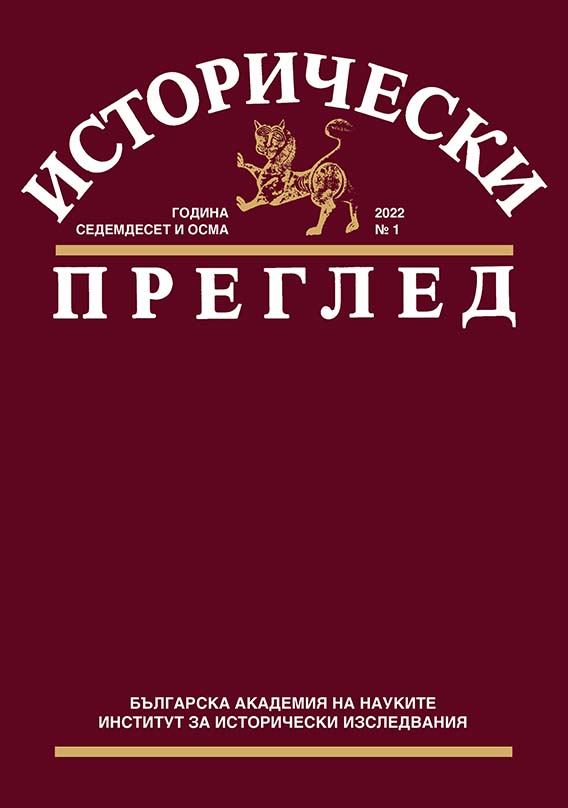Най-важните категории християнско население с военнопомощни или полицейско-охранителни задължения и тяхното място в социалната структура на османското общество – сходства и различия (XV – първите десетилетия на XVII в.)
The most important categories of the Christian population with military aid or police-security duties and their place in the social structure of Ottoman society – similarities and differences (15 – the first decades of the 17th century)
Author(s): Krastyo YordanovSubject(s): History, Cultural history, Military history, Political history, Social history, Middle Ages, Modern Age, Special Historiographies:, 15th Century, 16th Century, 17th Century, The Ottoman Empire
Published by: Институт за исторически изследвания - Българска академия на науките
Keywords: Ottoman empire; Christians; military support service; social status; military class;
Summary/Abstract: The study examines several categories of the Christian population with military assistance and police security duties during the early centuries of Ottoman rule. Their obligations and socio-economic status are compared. The study shows that very often it seems that the service of martolos, jebelyu voinuks, akanji Christians, Vlachs and derbentjias overlapped and there were many points of contact. Much more specific were the duties of the voynuks than the imperial stables and doganjias (falconers). What all the military aid groups studied had in common was that they were exempt from extraordinary taxes and duties. However, they were at different levels in the social hierarchy of Ottoman society, depending on the conditions under which they performed their official duties and their sources of income. An important criterion for determining the place in the social hierarchy was also the tax status under Ottoman law – whether people of a certain category with special obligations cultivated Mirian land within timars, zeamets, hass and waqfs, owing land taxes to their owners (which was characteristic of the raya), or were exempt from tax. The martoloses and falconers, owners of timars, as well as those who received a salary for their regular military service were identified as representatives of the askers. Voynuk commanders of lower rank – lagators, and Wallachian elders - princes, who in the 15th century owed timars can also be classified as military class. One step lower in the hierarchy were the representatives of those military aid groups which, in return for their service, were exempt from all land and personal taxes within the official farms they owned. These people were an intermediate category between the raya and the askers. Voinuks, part of the akandjias, the Falconers and the martoloses, had a similar status. This group also includes the Vlachs, who made a living from cattle breeding, and few settled in the villages, engaged in agriculture, but did not pay land taxes. The lowest in this categorization are some of the falconers, akandjias and martoloses, as well as all derbentjias. These groups were exempted only from state extraordinary taxes and duties, but paid all other raiyat taxes along with the ordinary raya. Therefore, we can say that these people best fit the concept of privileged raya.
Journal: Исторически преглед
- Issue Year: 2022
- Issue No: 1
- Page Range: 33-93
- Page Count: 61
- Language: Bulgarian
- Content File-PDF

